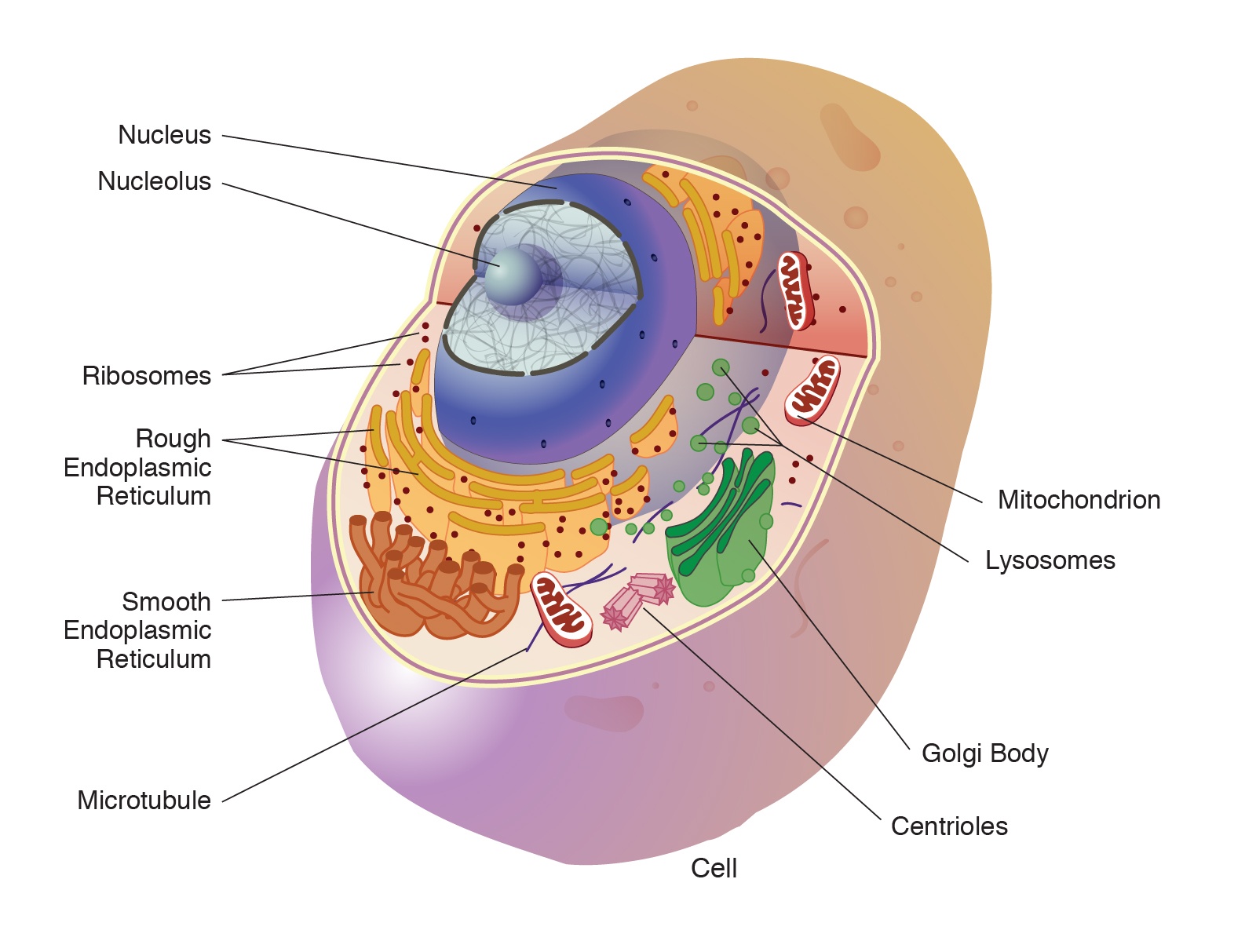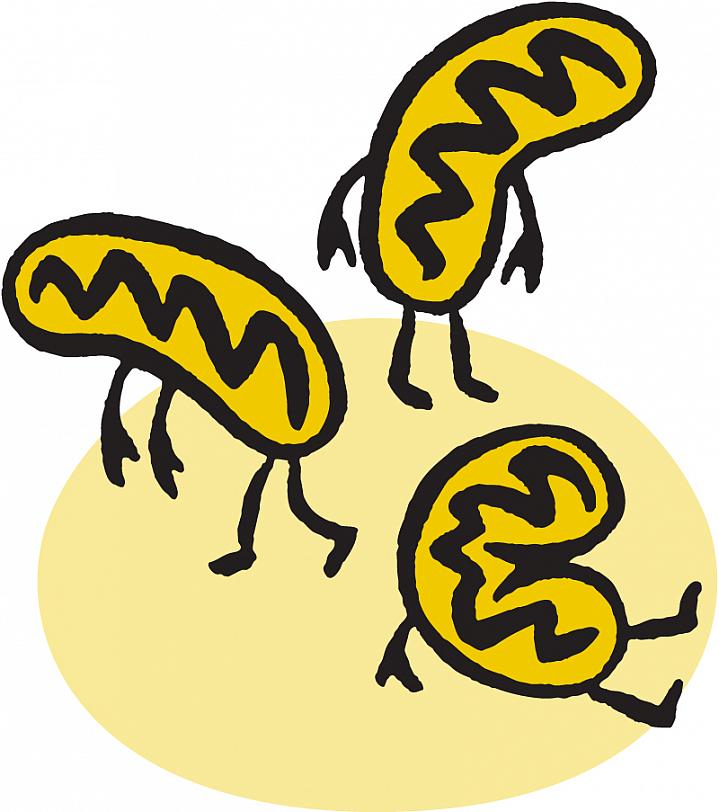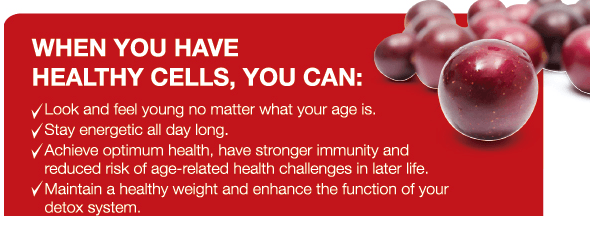We hear so much about cells. Namely, red blood cells, white blood cells, healing on the cellular level, etc. However, what exactly are cells, and what do they do? This article is all about human cells.
What are Human Cells?
Cells are the essential building blocks of all breathing things. To use an example, cells are to the body as bricks are to a house—without the bricks, there will be no house.
Cells are the smallest structures with the ability to maintain life, reproduce, and create all living things, from single-celled plants to multibillion-celled animals. The human body, which is comprised of numerous cells, begins as a single (1), recently fertilized cell. We all began as just one single cell!
The human body contains trillions of cells. They provide formation for the body, perform specialized functions, absorb nutrients from food, and transfer those nutrients into energy. Cells also comprise the body’s hereditary matter and have the ability to make copies of themselves.
Practically all human cells can only be seen through a microscope. To give an example of how small a cell is, one average-sized adult body, according to one estimate, contains one hundred trillion cells!
Cells consist of many parts, each one with a different function. Some of these parts, known as organelles, are dedicated structures that perform selected tasks within the cell. An organelle in a cell is equivalent to an organ in the human body.
The Anatomy of Human Cells
Human cells contain the following major parts:
Cell membrane – All cells in the body are surrounded by a cell covering known as the cell membrane. The cell membrane divides the material outside the cell (extracellular), from the material inside the cell (intracellular). It sustains the stability of a cell and manages the flow of materials into and out of the cell. All materials inside a cell must have admission to the cell membrane (the cell’s boundary) for the required exchange of materials.
The cell membrane is made up of two (2) layers of phospholipid molecules. Proteins in the cell membrane supply structural support, form channels for the passage of materials, act as receptor locations, perform as carrier molecules, and supply identification indicators. Each organelle carries out different tasks to keep the cell alive and healthy.
Nucleus and Nucleolus – The nucleus compares to the brain of a cell. It controls all actions that the cell undertakes. The nucleus, formed by a nuclear membrane is the control center of the cell. It also contains DNA (Deoxyribonucleic acid), the genetic material of the cell. DNA is the genetic design for the cell that includes all of the necessary information for cells to live, grow, reproduce, and die. This is what contributes to the nucleus’s absolute control of a cell.
The nucleolus is a coagulated region in the nucleus that contains RNA (Ribonucleic acid) and is the location of protein formation. The nucleus establishes how the cell will perform, in addition to the basic structure of that cell.
Cytoplasm – Cytoplasm is contained within the contents of the cell membrane. It is made up of a jelly-like fluid and other formations that encase the nucleus. It completely fills the cell membrane and accommodates the cytosol with ions, proteins, filaments, and macromolecular structures, and as well as other organelles suspended in the cytosol.
Cytosol – The cytosol is a semi-fluid material that fills the interior of the cell and implants the other organelles and subcellular compartments not including the contents within the organelles. The cytosol itself is surrounded by the cell membrane and the membranes of different organelles, therefore making up a separate cellular compartment.
A sizeable part of cell metabolism takes place here. However, the cytosol does not have a single function but instead is the location of multiple cellular processes. Examples of these processes include signal transduction from the cell membrane to sites within the cell, such as the cell nucleus, or the organelles.
Cytoplasmic organelles – Cytoplasmic organelles are tiny organs that are floating in the cytoplasm of the cell. An organelle is a minute formation in a cell that is enclosed by a membrane and has a definite function. Examples of organelles are the nucleus (mentioned earlier), mitochondria (structures that make energy for the cell), and lysosomes (sac-like containers filled with enzymes that digest and help recycle molecules in the cell). The nucleus is the most important organelle.
Each kind of organelle has a specific structure and a definite task in the function of the cell.
Cytoskeleton – The cytoskeleton is a system of long fibers that make up the cell’s formation framework. The cytoskeleton has numerous crucial tasks, including formulating cell shape, taking part in cell division, and allowing cells to move about. It additionally supplies a pathway system that manages the movement of organelles and other substances within the cells.

Endoplasmic reticulum (ER) – This organelle aids the process molecules created by the cell. The endoplasmic reticulum additionally transports these molecules to their precise targets either inside or outside the cell.
Golgi apparatus – The Golgi apparatus puts together molecules handled by the endoplasmic reticulum to be moved out of the cell.
Lysosomes and peroxisomes – These organelles are the recycling hub of the cell. They absorb foreign bacteria that attack the cell, clear the cell of contaminated substances, and recycle worn-out cell machinery.
Mitochondria – Mitochondria are intricate organelles that transfer energy from food into a form that the cell can use. They have their special genetic material, separate from the DNA in the nucleus, and can make duplicates of themselves.
Ribosomes – Ribosomes are organelles that administer the cell’s genetic commands to produce proteins. These organelles can drift freely in the cytoplasm or be linked to the endoplasmic reticulum (mentioned above).
How do Cells Function?
How do cells function? The cell has adequate genetic material to produce roughly one hundred thousand (100,000) different proteins, each with a different role. These are powerful little elements!
How does a cell know when to create a protein and what quantity of it to produce? This is determined by a process called gene expression. Certain genes are expressed (which means the code is read and used to make a protein) based on signals from the interior or exterior of the cell.
For instance, when a cell becomes too large, specific signals are created to instruct the nucleus to produce proteins required for cell division. Consequently, the nucleus then expresses those particular genes. In this way, cells manage themselves and each other, preserving balance and order in the body.
Cells normally receive signals in chemical form by the way of a variety of signaling molecules. When a signaling molecule connects with a proper receptor on a cell surface, this binding activates s a chain of events that not only carries the signal to the cell interior but also intensifies it additionally.

These chemical signals, that are proteins or other molecules formed by a sending cell, are regularly secreted from the cell and discharged into the extracellular space. There, they can float sort of like messages in a bottle over to local neighboring cells.
Although cell-cell signaling involves the transmission of a signal from a sending cell to a receiving cell, not all sending and receiving cells are next-door neighbors, neither do all cell pairs exchange signals in the same way.
For this reason, there are four (4) fundamental groups of chemical signaling established in multicellular organisms: paracrine signaling, autocrine signaling, endocrine signaling, and signaling by direct contact. The major difference between the various groups of signaling is the distance that the signal travels through the organism to reach the target cell.
The Malfunctioning of Cells

Unfortunately, cells do malfunction on occasion. This occurs when one or more of the organelles of a cell are damaged causing injury to the cell.
Scientifically, cell injury can transpire because of the following factors:
- Excessive or overly extended normal stimuli
- The action of toxins and other adverse manipulates that could inhibit the vital cell functions
- Insufficiency of oxygen and/or crucial nutrients and metabolites
- Excessive free radicals
Some fundamental points regarding cell Injury:
- Cell injury may be reversible or irreversible.
- Hypoxia (insufficient oxygen) is the most central cause of cell injury
- Irreparable cell injury can be identified by changes in the shape of the nucleus and rupture of the cell membrane.
Cell injury leads to cell malfunction, which leads to disease. Death caused by disease is labeled death by natural causes.
There are four (4) major categories of disease: deficiency diseases, infectious diseases, physiological diseases (including both non-genetic hereditary diseases and genetic diseases), and hereditary diseases.
Deficiency Diseases – Deficiency diseases are diseases that are initiated by the lack of specific crucial nutrients, particularly vitamins and minerals, in an individual’s diet over an extended period.
Infectious diseases – Infectious diseases are diseases caused by organisms such as viruses, bacteria, parasites, or fungi. Numerous organisms live in as well as on our bodies. They are normally harmless or even helpful in some cases. However, under specific conditions, some organisms can cause disease. Various infectious diseases can be passed from individual to individual.
Infectious diseases may be caused by:
- Bacteria. These one-cell life forms are to blame for illnesses such as strep throat, urinary tract infections, and tuberculosis.
- Viruses. Even tinier than bacteria, viruses set off a large number of diseases varying from the common cold to AIDS.
- Parasites. An organism that exists on or in a host organism and gets its food supply from or at the expense of its host. There are three (3) major classes of parasites that can cause disease in humans: helminths, protozoa, and ectoparasites.
- Fungi. Any member of a group of spore-producing organisms that noshes on organic matter, together with molds, yeast, mushrooms, and toadstools.
Physiological diseases – physiological diseases are also known as a physiological disorder is an illness that intervenes with the way that the tasks of the body are carried out. Examples are Alzheimer’s, Parkinson’s, Diabetes, leukemia, coronary heart disease, rheumatoid arthritis, asthma, or any form of cancer.
Hereditary disease – A hereditary disease is frequently described as something that is “passed down through the family.” That is because it is passed down from one or both parents to a child, who may, in turn, pass it to his or her children. Since hereditary diseases are produced by genetic mutations, one may see the terms “hereditary” and “genetic” used interchangeably when communicating about an inherited disease. However, while a genetic disease is also the result of a gene mutation, it might or might not be hereditary. These mutations arise either arbitrarily or due to an environmental factor. They are not inherited from parent to child, as it is with a hereditary disease.
How to Maintain Healthy Human Cells
For cells to function perfectly, they must have certain things in sufficient amounts and they need to make sure that there is not any toxic material that is building up.
Our bodies are constantly producing toxins: carbon dioxide, lactic acid but it has mechanisms to get rid of these toxic materials.
There must be an environment of sufficiency and non-toxicity. We achieve this through the windows of health:
- Nutrition
- Exercise
- Water
- Sunshine
- Temperance—exercise doing the good things in moderation and avoiding that which is harmful.
- Air
- Rest
Since cells are the engines that build and keep the body operating efficiently, it behooves us to do what it takes to keep them in optimal condition.
Questions, comments, and concerns may be left below.
Good Health!!
This has been a very interesting post about human cells. I didn’t know how powerful these little elemets were. It’s amazing how efficient they are. We should learn from a part of our ownselves. That is our cells! Thank you for this helpful post. It has even encouradge me! Now time to work as hard as my cells.
Hi Abel – That’s a good strategy: using our cells as examples for ourselves! I glad the post has helped you.
Thanks for commenting!
What an interesting and informative post.
I’m sure you’ve answered the prayers of many a parent of school age children with a homework assignment to complete, as well as the general interest of just learning what a cell does and how it performs.
I like how you cover the different approaches to keeping a cell healthy and what I can do to maintain the health of my cells.
Thank you very nicely written post, I look forward to reading further posts and learning more about the subject.
Hi David – I’m glad you enjoyed the article, and you are welcome to visit the site anytime.
Thanks for commenting!